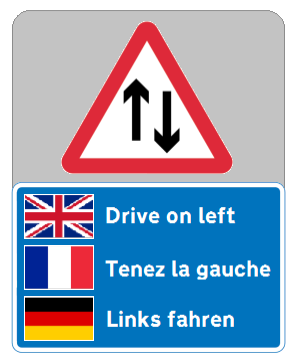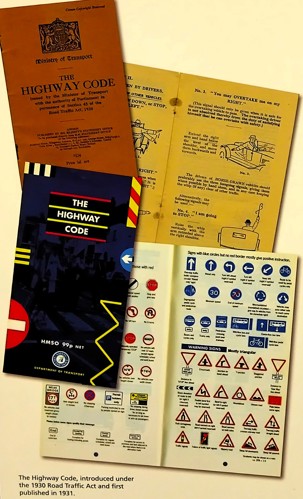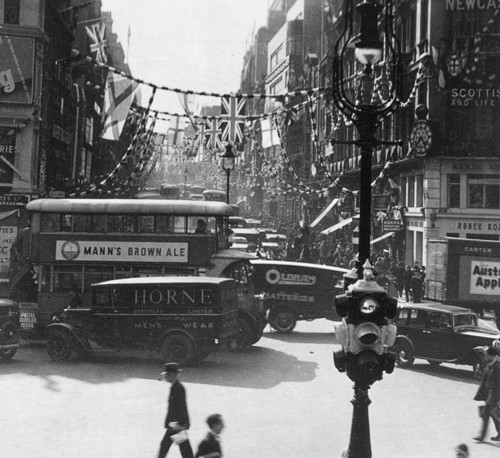- Home
- Help Centre
- Motoring Firsts
Motoring Firsts
Among the questions we are most frequently asked are the various motoring firsts. Listed below are some of the most common questions that have been answered by our Motoring Research Service.
The motor car was developed over many years by a number of talented individuals but Karl Benz of Mannheim in Germany is normally credited as the inventor of the motor car. In the autumn of 1885, his three-wheeled vehicle became the first successful petrol-engined car. He was awarded a patent for it on 29 January 1886 and became the first motor manufacturer in 1888 with his Modell 3 Benz. In 1886, Gottlieb Daimler and his protégé Wilhelm Maybach built the first successful four-wheeled petrol-driven car at Bad Cannstatt. The Daimler Motoren Gesellschaft was established four years later in 1890. On 1 July 1926 Benz and Daimler merged to become Daimler-Benz AG and its products Mercedes-Benz. Fredrick William Bremer, a plumber and gas fitter, built the first British four-wheeled petrol-engined motor car. Starting work in 1892, when he was 20, the still incomplete car made its first run on a public highway in December 1894.
There are a number of claims and counterclaims for the first motor car to appear on the road in Britain.
It is now generally accepted that the Hon. Evelyn Ellis was the first when he imported a Panhard et Levassor into Britain in June 1895 and undertook his famous journey from Micheldever in Hampshire to his home at Datchet in Berkshire. For some time it was claimed that a 2hp Benz Velo imported by Henry Hewetson in November 1894 was the first in Britain, but it is now believed this did not take place until later in 1895.
By the end of 1895, following further importations, it was estimated that there were 14 or 15 cars on Britain’s roads – a figure which had increased dramatically by 1900 to approximately 700 – 800! The million mark for private cars was reached in Britain in 1930, with 10 million in 1967.
Fredrick William Bremer, a plumber and gas fitter, built the first British four-wheeled petrol-engined motor car. Starting work in 1892, when he was 20, the still incomplete car made its first run on a public highway in December 1894.
Edward Butler of Newbury patented his Petro-Cycle in 1884 and had one running by 1888. He abandoned his plans to build production versions of the single-seat tricycles due to the ‘Red Flag’ Act.
John Henry Knight of Farnham was an engineer and enthusiastic inventor with a keen interest in photography and locomotion. With the help of engineer George Parfitt, in 1895 he created the first purpose-built, petrol-driven, three-wheeled car to be run on the roads of Britain. In order to improve stability, a fourth wheel was added the following year. This pioneering British car is on display at the National Motor Museum.
Cycle makers Charles and Walter Santler of Malvern Link, Worcestershire, built a steam car in 1889 which was subsequently fitted with a single-cylinder gas engine and then rebuilt again with a single-cylinder ‘petrol’ engine in 1894. Santlers went on to build several other cars between 1897 and 1913 when they launched a range of light cars for general sale.
Frederick Lanchester started work on a four-wheeled petrol car in 1895 which was successfully tested on the road in early 1896. The Lanchester Engine Co. commenced building production cars in 1899.
It is possible that the custom of driving on the left dates back to pre-history and may later have been used as an early road safety measure. At a time when the main danger on the roads was mugging, careful travellers would pass on-coming strangers on the left with their sword arm towards the passer-by.
The keep left rule did not become law in Britain until the increase in horse traffic made some sort of enforcement essential. Before this, the drivers of coaches leaving London for the country simply chose the firmest part of the road. The main dates for the introduction of the legal requirement to keep left are:
- 1756 – London Bridge
- 1772 – Towns in Scotland
- 1835 – All roads in Great Britain and Ireland
In Europe, Pope Boniface VIII instructed pilgrims to keep to the left in the year 1300. Later, class distinction in France meant that aristocrats drove their carriages on the left side of the road forcing everybody else over to the centre or to the right-hand side. Keeping left had really only ever applied to riding or driving. With the onset of the French Revolution in 1789 and the subsequent declaration of the rights of man in 1791 many aristocrats decided to keep to the ‘poor side’ of the road so as not to draw attention to themselves. Keeping to the right of the road was also seen as a way of defying the earlier Papal decree.
The subsequent Revolutionary wars and Napoleon’s European conquests led to the spread of driving on the right to Switzerland, Germany, Italy, Poland, Spain, Belgium and the Netherlands. Napoleon ordered his armies to use the right-hand side of the road in order to avoid congestion during military manoeuvres. The nations that resisted invasion – Britain, the Austro-Hungarian Empire, Russia and Portugal – generally kept to the left.
The Netherlands changed to driving on the right in 1795, but Dutch colonies in the Far East continued the old practices. Denmark had not been invaded by the French but changed in 1793. Russia did not switch until 1916. Czechoslovakia and Hungary were the last countries in mainland Europe to keep left, only changing to the right following invasion by Germany in the late 1930s.

Portugal made the change from left to right in the 1920s; countries with border crossings found there was great confusion if drivers were required to change sides of the road when passing from country to country. Sweden remained on the left until 1967 and changed to the right following a lengthy road safety campaign.
In Austria from 1805 to 1939 half the country drove on the left whilst the other half, the area that had been invaded by Napoleon, drove on the right!
Most of the British Empire adopted the British custom of driving on the left although Egypt, which had been conquered by Napoleon, kept using the right after it became a British dependency.
Pakistan considered changing from left to right in the 1960s. The main argument against was that camel trains often drove through the night while their drivers dozed. The difficulty in teaching old camels new tricks was a decisive factor in Pakistan rejecting the change.
Canada stayed on the left until the 1920s. During the American War of Independence, French liberal reformer General Lafayette gave advice to the revolutionary forces and spread the idea of driving on the right. The keep right rule was applied to the Pennsylvania turnpike in 1792, New York in 1804 and New Jersey in 1813.
Bucking the normal trend, the Pacific island of Samoa made the switch from driving on the right to driving on the left side of the road on 7 September 2009. The official reason given was so as to fall in line with near neighbours Australia and New Zealand which, like Britain, still drive on the left.
Find out more about the Museum's collections

Walter Arnold of East Peckham, Kent, had the dubious honour of being the first person in Great Britain to be successfully charged with speeding on 28 January 1896. Travelling at approximately 8mph/12.87kph, he had exceeded the 2mph/3.22kph speed limit for towns. Fined one shilling and costs, Arnold had been caught by a policeman who had given chase on a bicycle.
France introduced the first driving licences under the Paris Police Ordinance of 14 August 1893. The Motor Car Act of 14 August 1903, which took effect on 1 January 1904, introduced the driving licence (along with registration numbers for vehicles and a new speed limit of 20mph/32.19kph) into Great Britain.
George Smith, a 25-year-old taxi driver, was the first person to be charged with drink-driving. He was fined 20 shillings at Marlborough Street Police Court in London on 10 September 1897. Smith had been arrested by Police Constable Russell after crashing his electric cab into the front of 165 New Bond Street.
Mrs Bridget Driscoll of Old Town, Croydon became the first motoring fatality on 17 August 1896, when she was run over by a Roger-Benz car at Crystal Palace, London. Employed by the Anglo-French Motor Co, Arthur Edsell was driving at 4mph/6.44kph when he hit Mrs Driscoll, fracturing her skull in the process. The first driver to die from injuries sustained in a motoring accident was Mr Henry Lindfield of Brighton when his electrical carriage overturned on Saturday 12 February 1898. He died of shock the following day, caused by the amputation of one of his legs. According to the 19 February 1898 copy of Autocar, he had only driven the car two or three times and the accident was probably ‘due to the fact of the speed being so high’ – 16 or 17mph (25–27kph) – ‘a pretty high speed for a novice to maintain.’ The first crash to cause the death of a car passenger occurred on 25 February 1899 at Grove Hill, Harrow. Major James Stanley Richer, 63, died four days after the accident without regaining consciousness. The driver, Mr E.R. Sewell, had been demonstrating the vehicle, a Daimler Wagonette, to Major Richer, Department Head at the Army & Navy Stores, with the view to a possible purchase for the company. Mr Sewell was killed on the spot, becoming the first driver of a petrol-driven car to die in an accident.
The term petrol was not used until 1896 when it was patented by Messrs Carless, Capel & Leonard of Hackney Wick.
There are various claims for the first windscreen wipers. Some sources say that they were first used in France in 1907. British photographer Gladstone Adams is said to have had the idea for wipers whilst driving his Daracq home to Newcastle after watching the 1908 FA Cup Final at Crystal Palace (his team Newcastle United had lost 3 – 1 to Wolverhampton Wanderers). He patented his design in 1911. Various motoring magazine pictures show Prince Henry of Prussia in a car with a simple up and down squeegee-type wiper fitted to the windscreen in 1909. In 1919 (some sources say 1921), William Folberth of Cleveland, USA, marketed the first automatic windscreen wipers. They were operated by vacuum from the engine’s inlet manifold.
Britain’s first dedicated motor museum was set up by Edmund Dangerfield, Editor of The Motor magazine. Temporarily sited in Oxford Street, London, it opened on 31 May 1912 with over forty vehicles built before 1903 and a range of accessories. The exhibition closed on 31 July 1912 and reopened on 12 March 1914 at the Crystal Palace, Sydenham. The collection remained there until the British Government commandeered the building during the First World War when exhibits were returned to owners, taken in by Government Museums, or dumped on waste ground near Charing Cross Station. This has been described as ‘one of the untold tragedies of the war’. In 1931 the remaining unplaced vehicles from the 1912 Motor Museum were destroyed. In 1972, five of the saved cars from the original 1912 Museum were displayed at the newly opened National Motor Museum at Beaulieu.
The Motor Carriage Supply Company of London offered the first driving lessons in Britain in June 1900. The lessons were conducted by their instructor, a Mr Hankinson. The first organisation to title itself a driving school in Britain was the Liver Motor Car Depot and School of Automobilism of Birkenhead. William Lea established the school in May 1901 and its Chief Instructor was Archibald Ford.
France introduced the first driving test under the Paris Police Ordinance of 14 August 1893. In Great Britain the driving test was introduced on a voluntary basis, on 13 March 1935, but did not become official until 1 April 1935 and was made compulsory on 1 June 1935. The first driving test pass certificate in Great Britain was awarded on the 16 March 1935 to Mr R.E.L. Beere of Kensington.
The Highway Code was first published in booklet form in Great Britain in April 1931. It cost one penny.

The first traffic signals in Britain (and indeed the world) were installed outside the Houses of Parliament on 10 December 1868. They used contemporary railway signalling technology – semaphore arms for day-time use and green or red gas lamps at night. Unfortunately, they exploded on the night of 2 January 1869 injuring the police constable operating them! The first electric stop-go traffic lights were installed in Cleveland, Ohio in August 1914, with the first three-colour traffic lights in Detroit in 1919. 1922 saw the first electrically synchronised traffic signals installed in Houston, Texas. In Great Britain, manually operated three-colour traffic lights were first used in Piccadilly, London, in 1926, with automatic traffic lights making their first appearance on an experimental basis in Princes Square, Wolverhampton, during November 1927. The experiment was presumably a success and the lights became permanent in 1930. Pedestrian-operated street-crossing lights were first erected on the Brighton Road, Croydon, Surrey in 1932.

An invention of Gerald A. Hale and Professor H.G. Thuesen of Oklahoma State University, the world’s first parking meter was installed Oklahoma City, USA, in July 1935. The first person to be arrested for a parking meter offence was the Reverend C.H. North of the Third Pentecostal Church of Oklahoma City in August 1935. Britain’s first parking meters made their appearance outside the American Embassy in London’s Grosvenor Square on 10 July 1958.
The first roadside petrol pumps became operational in St Louis, USA, in 1905. Roadside petrol pumps were first installed in Britain in 1913, though they did not enter into general use until 1921. In 1920, the Automobile Association opened the first roadside petrol station (solely for the purpose of supplying fuel as opposed to being a garage) at Aldermaston, Berkshire. A number of similar stations were established around the country. They were operated by AA Patrolmen and exclusively for the use of AA members. They established the modern pattern of vehicles pulling off the public road and drawing up alongside petrol pumps rather than being filled at the kerbside as at garages. Britain’s first self-service petrol pump became operational in November 1961 at Southwark Bridge, London.
Reflective Cats Eye road studs were patented by Percy Shaw of Halifax in 1934. A manufacturing company, Reflective Road Studs Ltd, was established in 1935.
Wheel clamps were first used on the streets of London in May 1983. At the time they were referred to as the Denver boot, following their widespread use in that US city.
How can we help?
Still can't find what you're looking for?

Subscribe for updates
Get our latest news and events straight to your inbox.